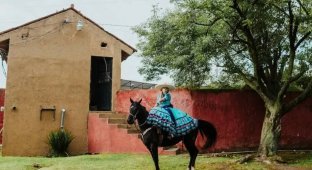What national clothes look like and when they appeared in different countries (11 photos)
Traditional costumes of different countries are not just clothes, but also a symbol of culture, history and local customs. They arose on the basis of natural conditions, historical events and religious beliefs. Today we will consider several interesting examples of national clothing, its origin and symbolism. 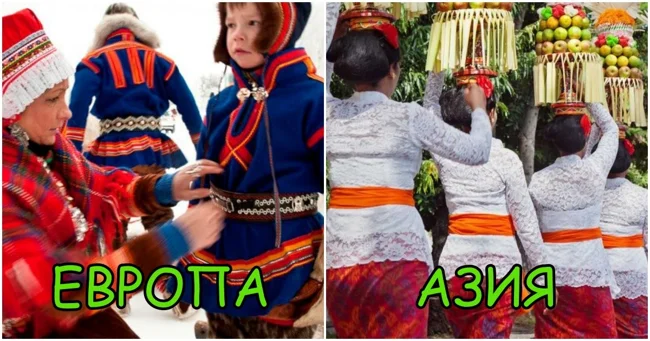
Charro (Mexico)
This is a male outfit of Mexican cowboys, which appeared in the 18th century. The suit was created for horseback riding and had decorations in the form of silver buckles and lacing. Charro symbolizes the culture of Mexican shepherds and the important role of agriculture in the life of the country. 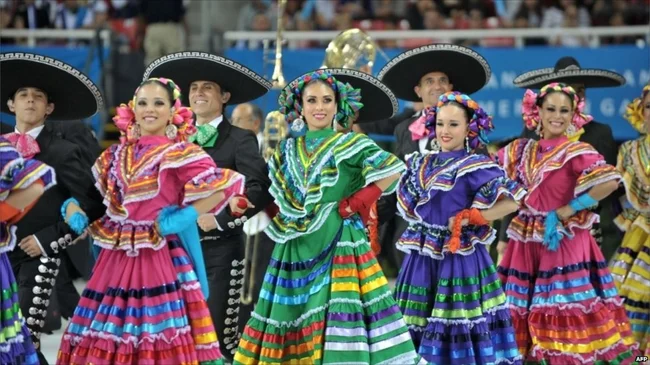
Charro
Kimono (Japan)
Kimono, a symbol of Japan, dates back to the Heian period (794-1185). Initially it was everyday clothing, but over time the kimono became a symbol of status and ceremonial significance. It is made of silk and decorated with intricate embroidery, each element of which has a symbolic meaning: flowers, birds, dragons, etc. Kimono reflects the cultural values of Japan - simplicity, elegance and harmony with nature.
Sari (India)
A sari is a long strip of fabric worn by Indian women by draping it around their bodies. This garment originated thousands of years ago and has remained popular to this day. The fabric of a sari varies by region, but is most often silk or cotton. The colors and patterns of the sari often symbolize the woman's marital status, religion, or caste.
Sami Clothing (Lapland)
The Sami, the indigenous people of northern Scandinavia, wear "kolt" or "gakti" - brightly colored costumes, often made from reindeer skins. This attire reflects both their connection to nature and the need for protection from the harsh climate. Sami clothing dates back thousands of years and is still worn today, especially during traditional celebrations 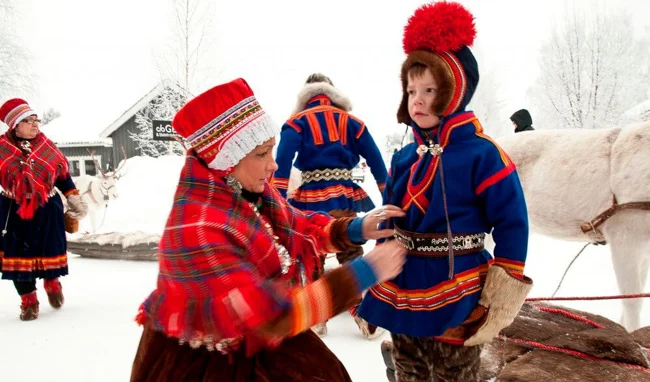
Sami clothing
Bolero (Spain)
Spanish flamenco dresses, especially popular in Andalusia, have become a symbol of the region's passionate and dynamic culture. Known as "trae de gitana", these dresses with cascading ruffles and flounces are worn both on stage and at celebrations. They originated in the 19th century as dance costumes and embody the passion and energy of Spanish flamenco.
Gho (Bhutan)
In Bhutan, the gho is a traditional attire for men, consisting of a long robe tied with a belt. Women wear a "kira" - a long, floor-length dress. This costume appeared in the 16th century and was established as official attire at the government level in the 1980s to preserve the country's cultural heritage. 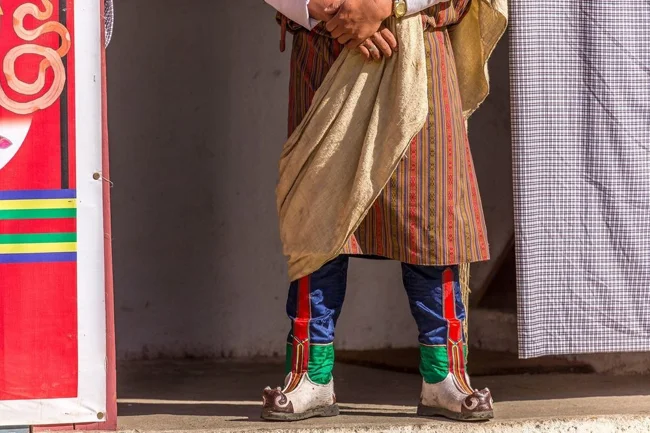
Gho
Poncho (South America)
The poncho worn by the Andean people has an ancient history. These capes, made from llama or alpaca wool, help protect against the cold in highland areas. The geometric patterns and colors of the ponchos often indicate belonging to a certain community or region.
Non La (Vietnam)
The famous cone-shaped hat "Non La", popular in Vietnam, dates back thousands of years. It is made from palm leaves and is used to protect from the sun and rain. Hats from the Hue region are distinguished by the fact that they have verses woven into them that can be read if you hold the hat against the light.
Batik (Indonesia)
The art of batik, dating back to the Majapahit kingdom (14th century), is today a traditional garment, especially in Java and Bali. These are textiles with hand-applied patterns created with wax and dyes. Batik is part of official ceremonies, and each pattern has its own meaning. 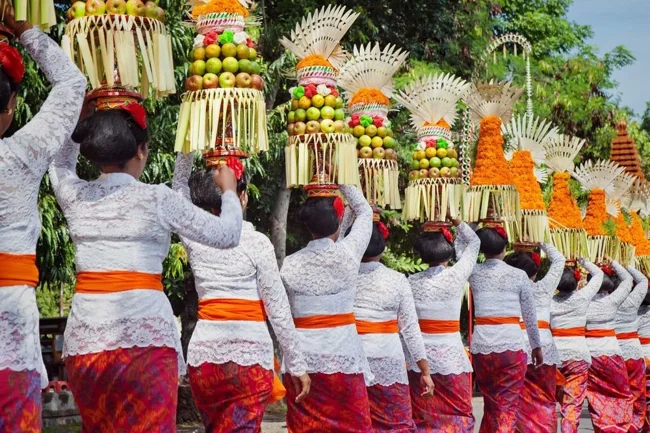
Batik
Bavarian Dirndl and Lederhosen (Germany)
In Bavaria (Germany), the traditional dirndl and lederhosen costumes originate in the 18th century and were used as work clothes for peasants. These costumes have become a symbol of Oktoberfest and are an important part of the region's cultural identity. 
Bavarian Dirndl and Lederhosen
Kente (Ghana)
A West African fabric, especially popular in Ghana, Kente features vibrant colors and intricate geometric patterns. Originally reserved for royalty, today it is worn for festivities and special occasions. Each color scheme has its own meaning, from strength to spirituality. 
Kente
Kilt (Scotland)
First popularized in the 17th century, the Scottish kilt is made of wool with a tartan pattern. This outfit was originally worn by fighters of Scottish clans. The color and pattern of the tartan often symbolized clan membership. 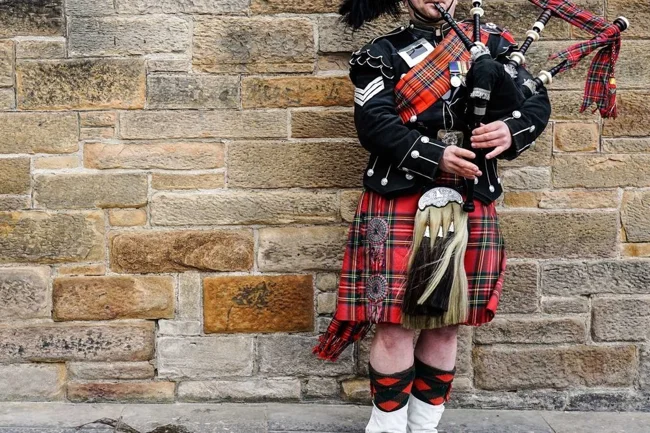
Kilt
Hanbok (Korea)
Hanbok originated in Korea during the Joseon Dynasty (1392–1897). It is characterized by its flowing lines and vibrant colors. Traditionally, hanbok was worn daily, but today it is worn for national holidays and family ceremonies. 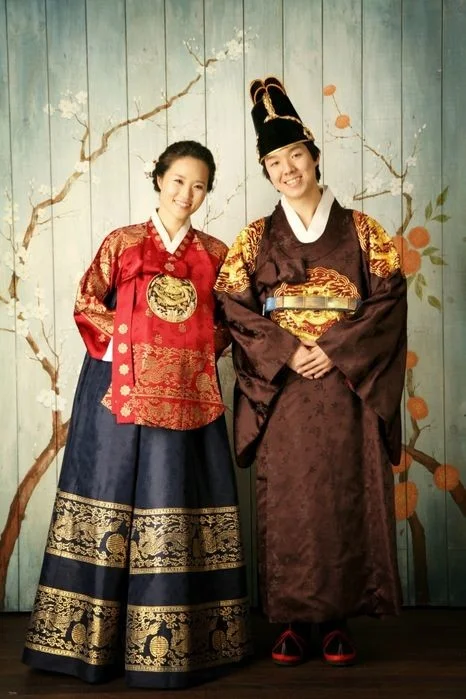
Hanbok
Bunnad (Norway)
This is a traditional garment that originated in the 18th and 19th centuries as a formal attire. Today, it symbolizes Norwegian identity and patriotism and is worn at weddings and national holidays. 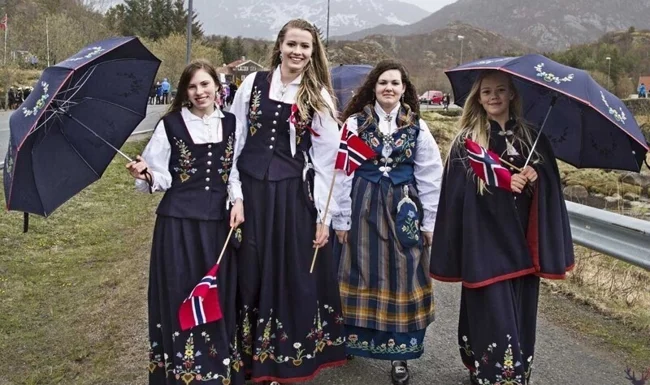
Bunnad
Masai (Kenya)
The attire of the Maasai warriors is brightly colored fabrics (shuka) and jewelry that they wear as everyday clothing. The colors of clothing and jewelry have symbolic meaning and reflect important events in a person's life. 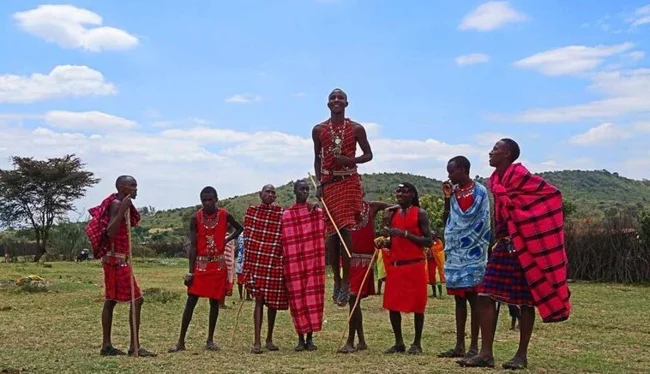
Masai












